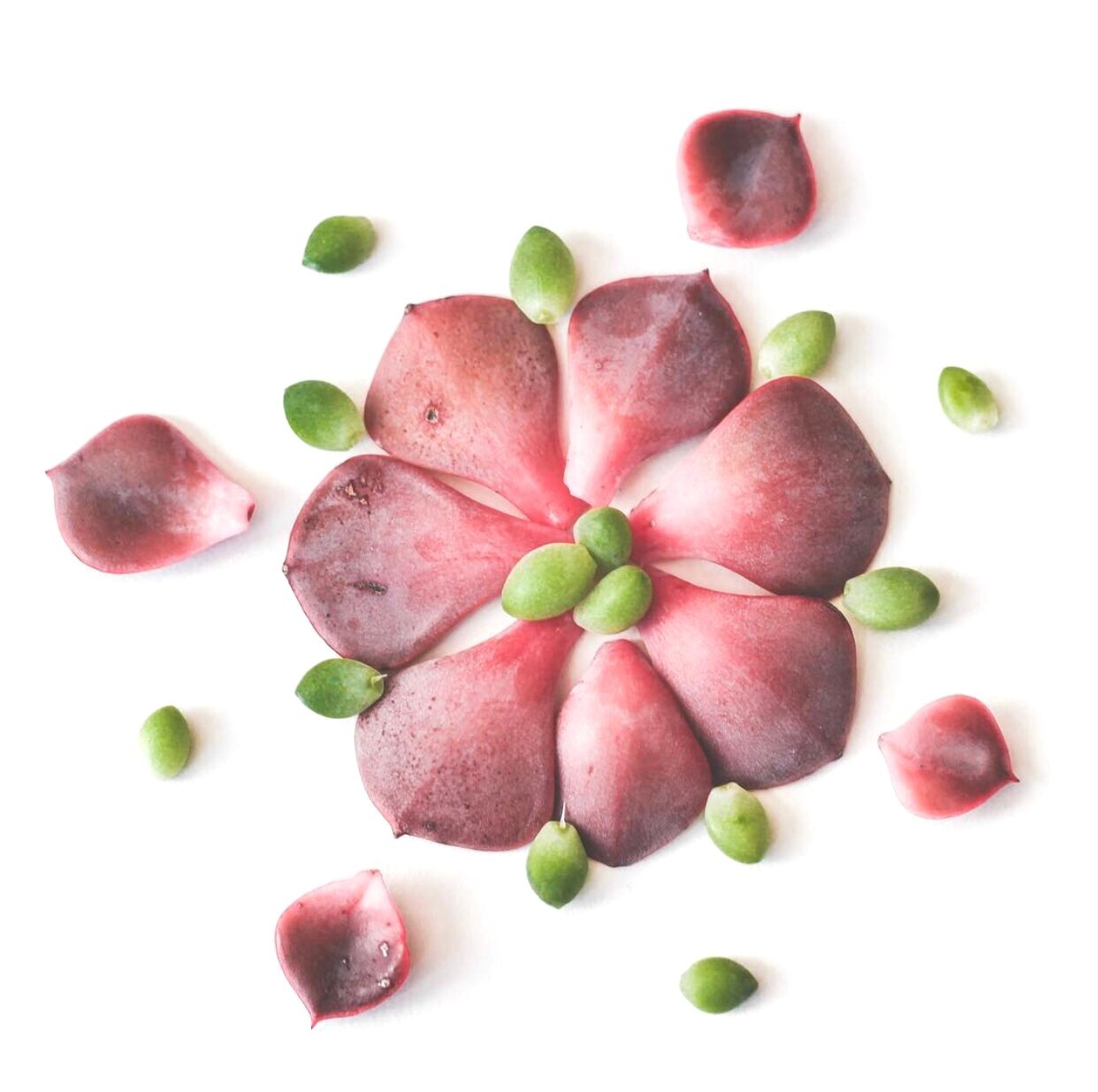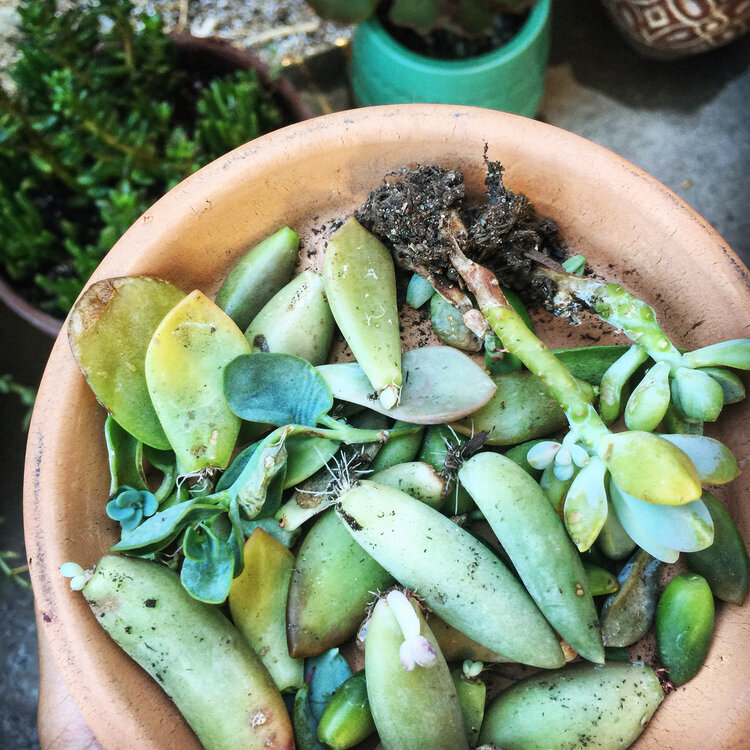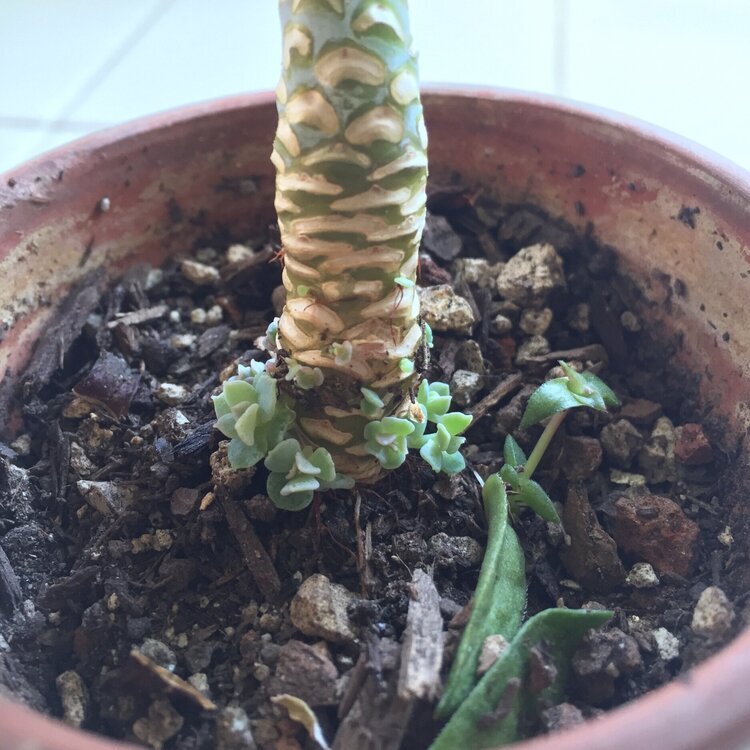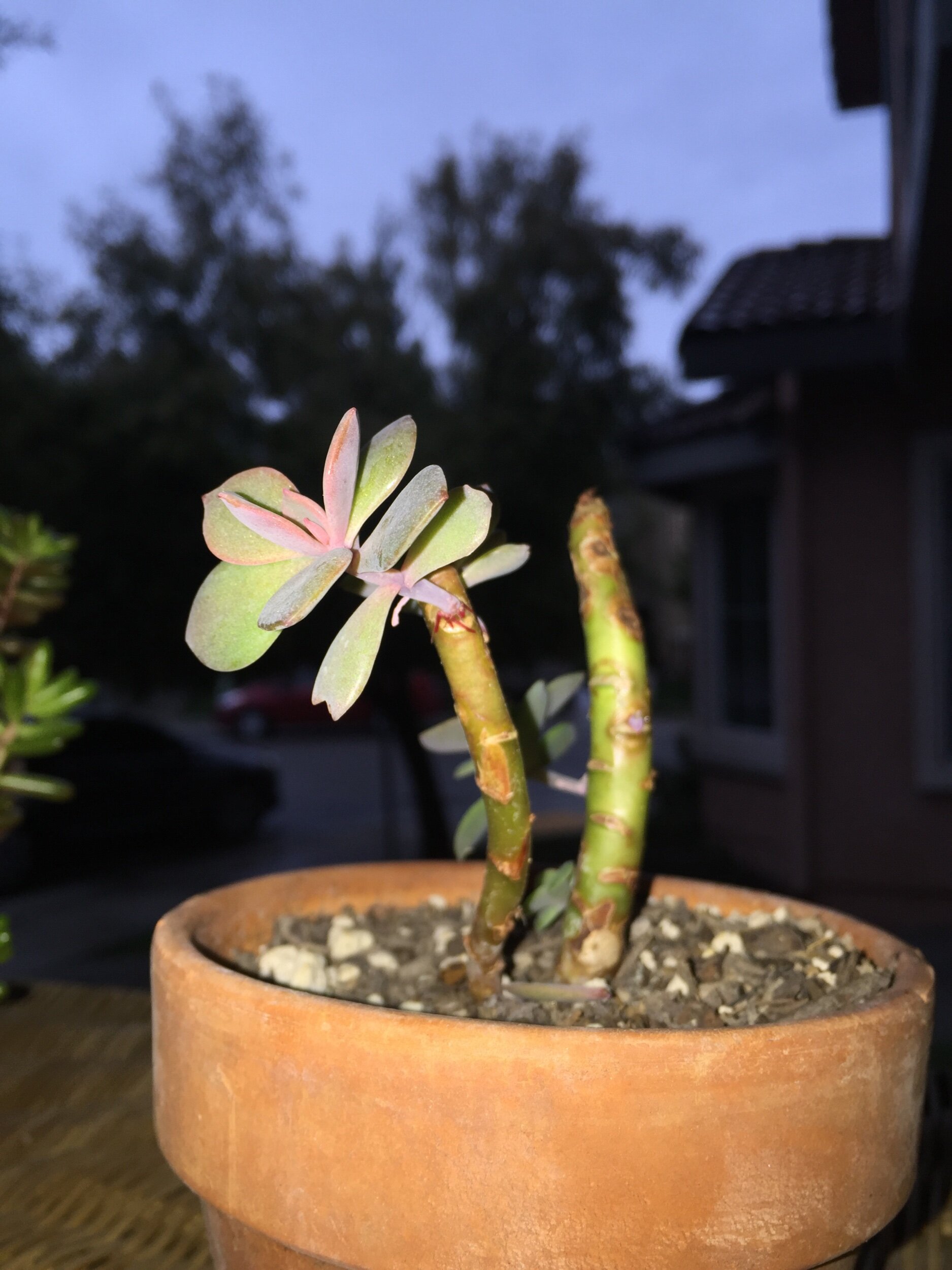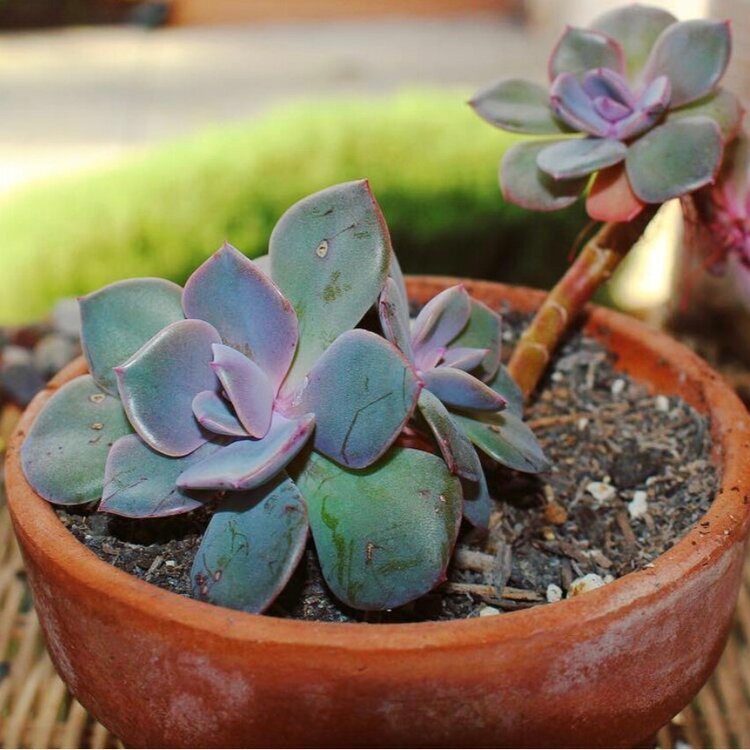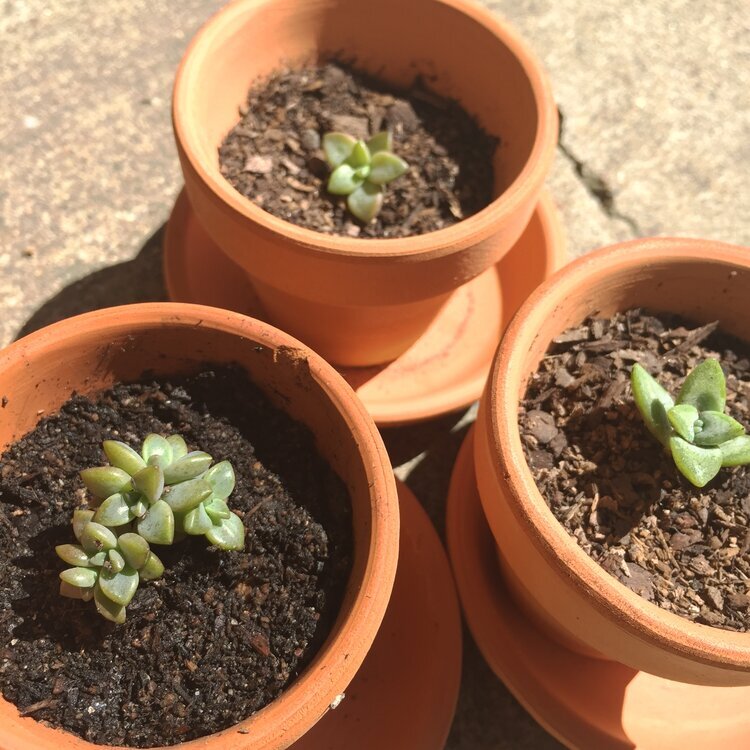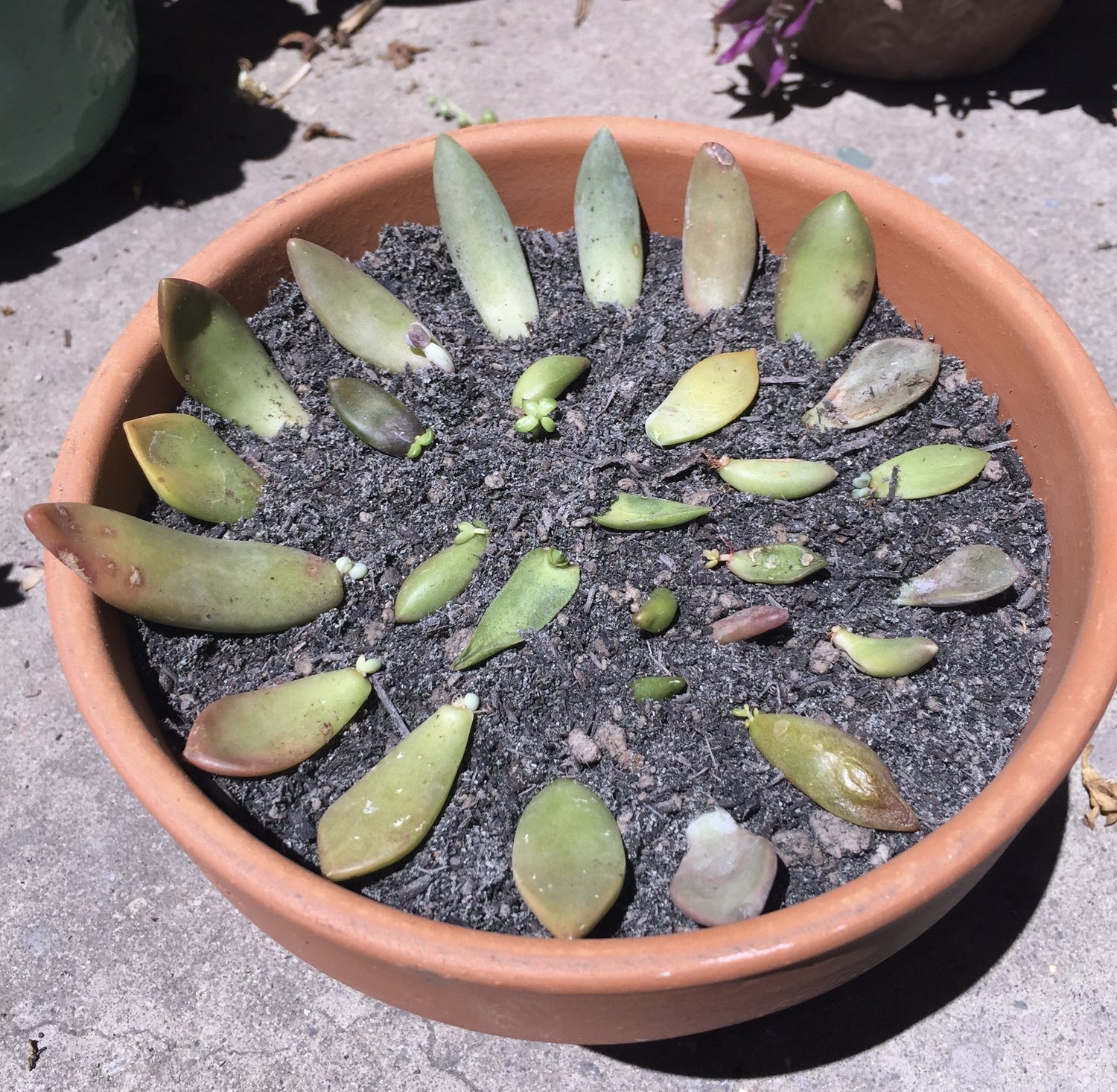Succulent Propagation-Updated
OK, so I still get a ton of questions about how to successfully propagate succulents. I wanted to write a follow-up post with my most frequently asked questions and some tips & tricks I use to help those baby plants grow!
Cuttings vs. Leaves
Not all succulents have leaves you can propagate. Some species are easier to propagate than others. You will need to cut a whole stem off of some plants AND not all leaves and cuttings are created equal! (I’ll get into this more later) Above you’ll see some cuttings vs. leaves from my garden.
The two stems you see below are from plants that became infested with mealybugs (the #1 pest you may encounter when growing succulents). I ended up pruning the entire plant to remove the bugs and with no effort at all. Frankly, I forgot about them while they were in isolation and as a result, you can see new babies started to sprout! This is followed by the progress over the next few months.
So if you have a plant with dying or rotting leaves, just prune it, and it will grow back as long as there aren’t any other underlying issues.
Cuttings! Much easier and have a higher success rate than propagating leaves from scratch.
Cut a stem or separate sections like I did in the photo below.
If you’re separating already established plants, you can just re-pot those in the soil right away and follow a regular watering schedule. *I actually like to wait a day or two to water recently transplanted plants to reduce shock.
Stem cuttings with no roots.
Let cuttings callous over for 2-3 days.
I like to place my stems in jars of water while they root. Learn all about Water Propagation here.
You can also re-pot the stem. Burry the calloused end about an inch into the soil, and then water regularly.
* These methods also apply to broken or damaged stems caused by impact, not stems that may be rotting or have dried up. There are exceptions to this rule because succulents are very interesting and resilient creatures. I’ve had “dead” stems I pruned off, only to grow entire new plants again. So with that being said, I keep everything and just throw it on some dirt!
Stunted Growth
“My succulent babies always die between the time you have a baby plant still attached to a leaf and the leaf falling off.” When someone said this to me I knew exactly what they were talking about.
You’re going to want to adjust your watering at this time. Now that there are roots below the surface that you can no longer see, you’re going to want to water your new plants just a little more. I often struggled to get past this stage because the roots I didn’t see would often dry up and growth would stop. This step is going to take a little trial and error. You will eventually be able to use your judgment on how much you should water your new babies. You want to make sure the water gets down to the longer roots, but not too much at the same time. If you’re worried about overwatering, take one of those little plastic measuring cups they give you when you buy kids cough syrup, and use that to water them. Don’t worry, you’ll be a pro in no time!
If I’m being completely honest, my most successful leaf propagations would be when I just threw the leaves or cuttings back in the same pot with the mother plant. This is how succulents naturally propagate "in the wild" lol.
What type of soil do you use?
You only want to use cacti & succulent soil. You can also substitute citrus & palm soil. Cacti and succulent mix are made up of soil, rocks, sand, and maybe wood chips. This allows the soil the break up a bit to make room for your plant’s fragile and shallow roots. I’ve attached a few options below. A lot of soil mixes contain water-retaining components that can be helpful for your ordinary houseplants in between waterings, but not good for your cacti & succulents. This leads me into my next most asked question….
Rotting Leaves
The dreaded rotting leaves! When your leaves feel mushy or soggy, they start turning black or brown, and look transparent, they’re probably starting to rot. Reasons why this might happen include:
Overwatering. Your soil is too wet. I did this all the time when I first started. As you can see from my picture below, I would always saturate the soil I placed my leaves on. I don’t know why I felt the need to do this, but I did and my succulents would never successfully grow past a certain point.
Your leaf or cutting wasn’t healthy, to begin with. You want to pick the healthiest, prettiest, plumpest leaves.
You didn’t let the leaves or cuttings callous over for a few days. *If you place your leaves on top of dry soil you should be fine.
Shriveled Leaves?
Unfortunately, not all leaves will produce new plants. Much like other seeds you plant, not all will sprout. Tend to the healthy ones, toss the dried up leaves and try again.
Another reason your leaves are shriveling up might be the type of plant you’re pruning. Like I said above, not all succulents propagate from leaves. You might not want to or think you have to, but you’re going to have to get to know your plants. I want you to look up their names, and learn about what they like and don’t like. This will also come naturally over time.
Roots but No Rosettes
Do your leaves sprout a lot of pretty pink roots, but never produce a rosette? I don’t know how or why it works, but I learned, if you tear off or pluck a root or two it will "shock" your leaf to produce a rosette.
Don’t think you have adequate lighting in your house?
Try a grow light! I used to think that grow lights were only for the master botanists, but no they’re great for us amateurs and hobbyists too. I have a growing rack that I just clip mine on to, and I may be imagining it, but I feel like they grow faster with the added light. The grow light bulbs are great for homes that don’t have a lot of natural sunlight, and you can just screw them into the lamps or recessed lighting you already have. They’re very inexpensive and you can pretty much create a jungle in your house if that’s your thing.

